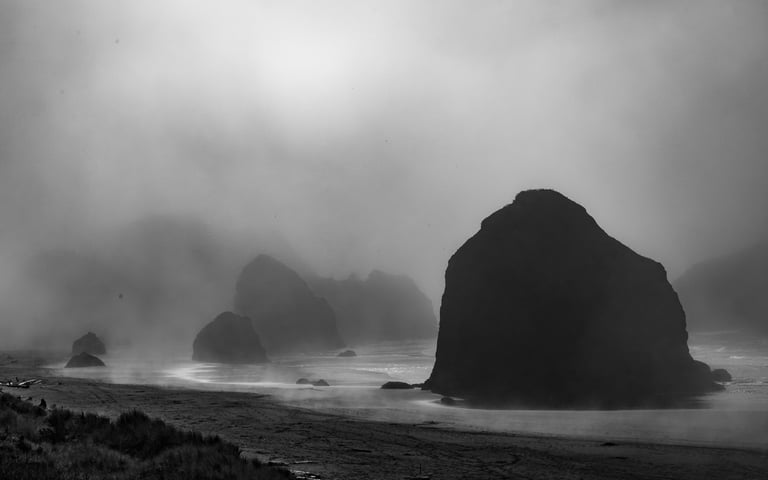Black and White
To photograph great black and white pictures, focus on finding scenes with high contrast between light and dark areas, utilizing shadows effectively, paying close attention to textures and shapes, and shooting in RAW format to maximize post-processing options; consider using a small aperture and low ISO to maintain image quality, and often shoot in monochrome mode on your camera to visualize the scene in black and white while composing your shot.
Key aspects of black and white photography:
Contrast is key:
Look for scenes with distinct light and dark areas to create impactful black and white images.
Shadow play:
Utilize shadows to separate your subject from the background and add depth to your composition.
Texture and pattern:
Black and white photography accentuates textures and patterns, so seek out subjects with interesting surface details.
Shoot in RAW:
RAW format allows for greater flexibility in post-processing, giving you more control over tonal adjustments in your black and white image.
Monochrome mode:
Using your camera's monochrome mode can help you visualize the scene in black and white as you compose your shot.
Aperture and ISO:
Generally, use a smaller aperture like f/8 or f/11.
Lighting considerations:
Hard light: Can create strong contrast with deep shadows, good for dramatic effects.
Soft light: Provides more even lighting, ideal for subtle details.
ISO:
Set to the lowest possible value (usually around 100) to minimize noise and grain in your image, especially important for black and white photography where subtle tonal changes are crucial.
Aperture:
Choose a smaller aperture like f/8 or f/11 to achieve a larger depth of field, ensuring most of your scene is in focus.
Shutter Speed:
Adjust based on lighting conditions and desired motion blur. For sharp details, use a faster shutter speed, while a slower shutter can add creative effects with movement.
Filters:
Experiment with colored filters (like red or orange) to accentuate specific elements in your scene depending on your subject matter.
Lighting:
Pay close attention to lighting conditions, as black and white photography thrives on strong contrast between light and shadow.
Composition:
Focus on strong lines, shapes, and textures as they become more prominent in black and white images.
More Tips

